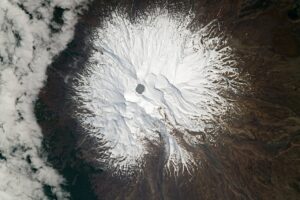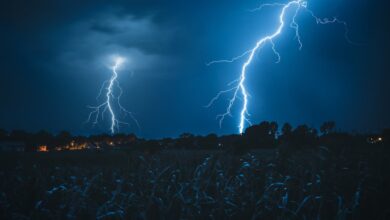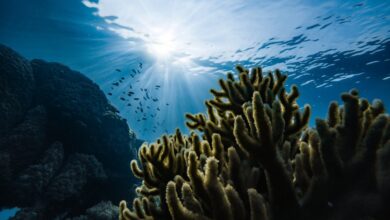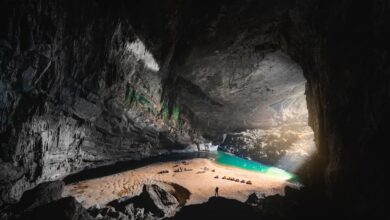Mount Ruapehu – The Lord Of The Rings Volcano
Mount Ruapehu, The Lord Of The Rings Volcano
Mount Ruapehu is a stratovolcano located in New Zealand’s North Island, at the southernmost end of the Taupo Volcanic Zone. It is located 23 km (14 miles) northeast of Ohakune, and 23 km 14 mi southwest of Lake Taupo’s southern shore. This is within Tongariro National Park. It is the North Island’s main ski resorts, and its slopes are dominated by glaciers.
Ruapehu is the most active volcano in New Zealand. It has three major peaks, Tahurangi (2.797 m), Te Heuheu (2.755 m) and Paretetaitonga (2.751 m). Crater lake is the name of a deep, active crater located between the peaks. It fills up with water when there are major eruptions. Ruapehu is Maori for “pit of sound” or “exploding hole”.
Ruapehu lies in the middle of New Zealand’s North Island, about 23 km (14 miles) northeast of Ohakune and 14 km (23 mi) southwest from the southern shore of Lake Taupo. It is part of Tongariro National Park. Ruapehu, the southernmost and largest volcano within the park, has an estimated 110 km3 volume. A ring plain is formed by volcanic material such as lahar deposits, ashfall, and landslide debri.
Three access routes lead to Ruapehu. Each access route leads directly to one of three ski fields that can be found on the mountain’s slopes. State Highway 48 takes you to Whakapapa Village, at the foot of the mountain. From there, an access road climbs the mountain and leads to Iwikau Village on the northwestern slopes of Whakapapa Skifield. Ohakune has an access road to Turoa Skifield, located on the southwest slopes. A four-wheel-drive track from Desert Road (State Highway 1). leads to Tukino Skifield, which is on the east slopes.
on the mountain’s slopes. State Highway 48 takes you to Whakapapa Village, at the foot of the mountain. From there, an access road climbs the mountain and leads to Iwikau Village on the northwestern slopes of Whakapapa Skifield. Ohakune has an access road to Turoa Skifield, located on the southwest slopes. A four-wheel-drive track from Desert Road (State Highway 1). leads to Tukino Skifield, which is on the east slopes.
The active crater of Ruapehu, called Crater lake, is located at the southernmost end of the Summit Plateau. As the name implies, the crater is filled with an acidic, warm-watered lake. The outlet of the lake is located at the head Whangaehu valley, where the Whangaehu River rises. Ruapehu eruptions are notorious for causing destructive lahars in the Whangaehu River. In the past, tephra-dams were built across the outlet of Whangaehu River on multiple occasions. The most recent was in 1995. The dams collapsed in 1953 and 2007, causing Crater Lake to erupt each time. This sent lahars into the river. Tangiwai’s Tangiwai Disaster was caused by the 1953 lahar. 151 people were killed. Lahars even larger than the one in 1953 occurred in 1862, and again in 1895.
Six of the 18 named glaciers on Ruapehu have been identified. There are two glaciers in the active crater. One is on the north side, under Paretetaitonga Peak, and the other to the south. These are New Zealand’s crater glaciers. The majority of ice found on Ruapehu can be found in three glaciers, the Whangaehu and Summit Plateau glaciers, as well as the Mangatoetoenui. Summit Plateau is not really a glacier, but an icefield that covers an extinct volcano crater. The ice can reach more than 130 meters thick. The Whangaehu Glacier feeds the Whangaehu River and the Mangatoetoenui Glacier is one of Ruapehu’s main sources of Waikato River. Many of the streams which originate on the western slopes of Ruapehu, including the Whakapapa, Manganui o te Ao and Whakapapa rivers, feed into the Whanganui River.
Mount Ruapehu Glaciers
Ruapehu’s glaciers are located at the northern limit of the permanent ice formation in New Zealand. They are therefore extremely sensitive to climate changes. Since 1955, surveys of the glaciers found that they were all thinning out and retreating. The exception was the northern crater ice, which had thickened and widened following the 1953 Crater lake outburst, which lowered the water level in the lake.
2016 Eruption Warning
Anyone planning to recreate Frodo’s trip in Lord Of The Rings by taking a New Zealand vacation was advised to postpone the idea.
Mount Ruapehu in New Zealand’s Tongariro National Park was upgraded to alert after its crater lakes temperature nearly doubled within a matter of weeks.
GNS Science, a service that monitors earthquakes and volcanic activity, said that recent visits to the mountain have revealed an increase in the production of volcanic gases. This has prompted fears about an imminent eruption.
Satellite image of Mount Ruapehu, before the eruption in September 2007, shows the lahar (mud and other debris) flowing down the volcano. [Image: NASA]
Last September 2007, the volcano that forms the backdrop of Mordor, the Peter Jackson directed trilogy, erupted.
Brad Scott, a volcanologist, said that there are “more signs of life” at the volcano. Recent visits to the volcanic site have confirmed an increased output of gas.
Volcanoes are deep-seated vents that emit molten rock and debris from the Earth’s interior.
Follow Video Volcanoes The Earth’s molten center releases large amounts of heat, which causes a lot of eruptions. Volcanoes loading…
Volcanoes release ash, lava and rocks into the air when thick magma and gases build up beneath the surface. After the material that was spewed out during an eruption has hardened, we see the mountain-like mounds associated with volcanoes.
Large eruptions can be dangerous to people who live near volcanoes. The flow of searing lava can reach temperatures up to 1,250 degrees and burn everything it touches, including people and entire towns. Ash and toxic gasses can cause lung problems and other issues.
Volcano Lights: Follow the Video Why do there are bolts of lightning when a volcanic eruption occurs? What is lightning? How does it form? Volcano Lights loading…
In the last 300 years, it is estimated that over 260,000 people died from volcanic eruptions or their aftermath.
Around 1,900 volcanoes are active. This means they are showing some activity and will likely explode again. Other volcanoes, which are not currently active but may become so in the future, are dormant. Some are extinct.





